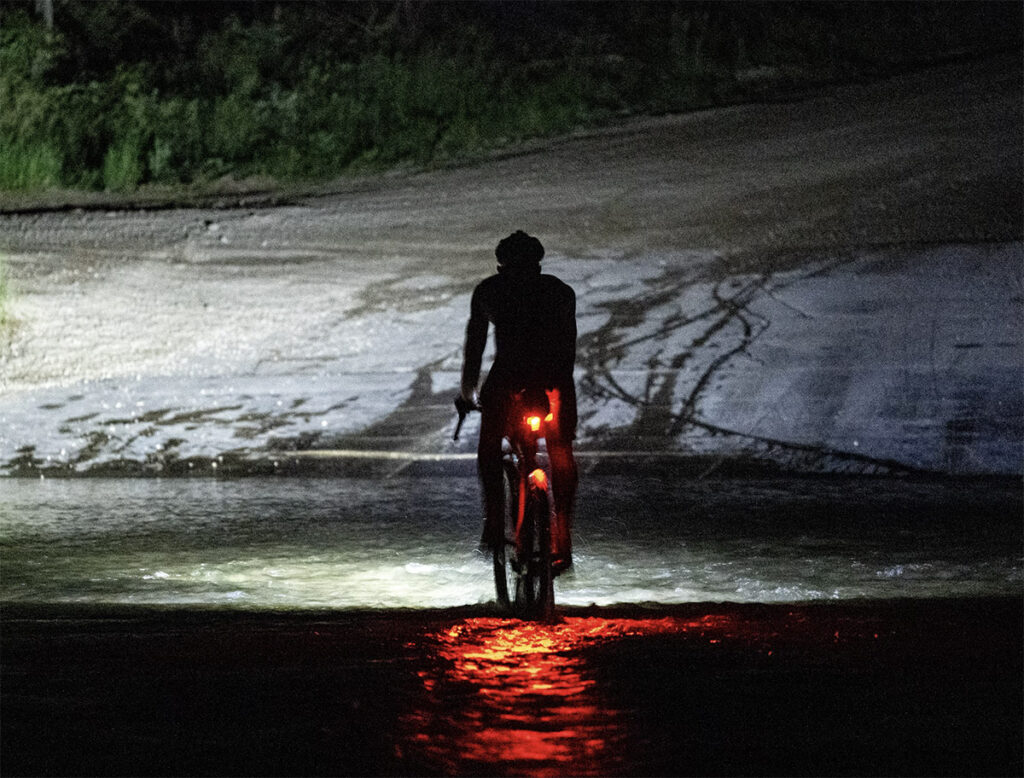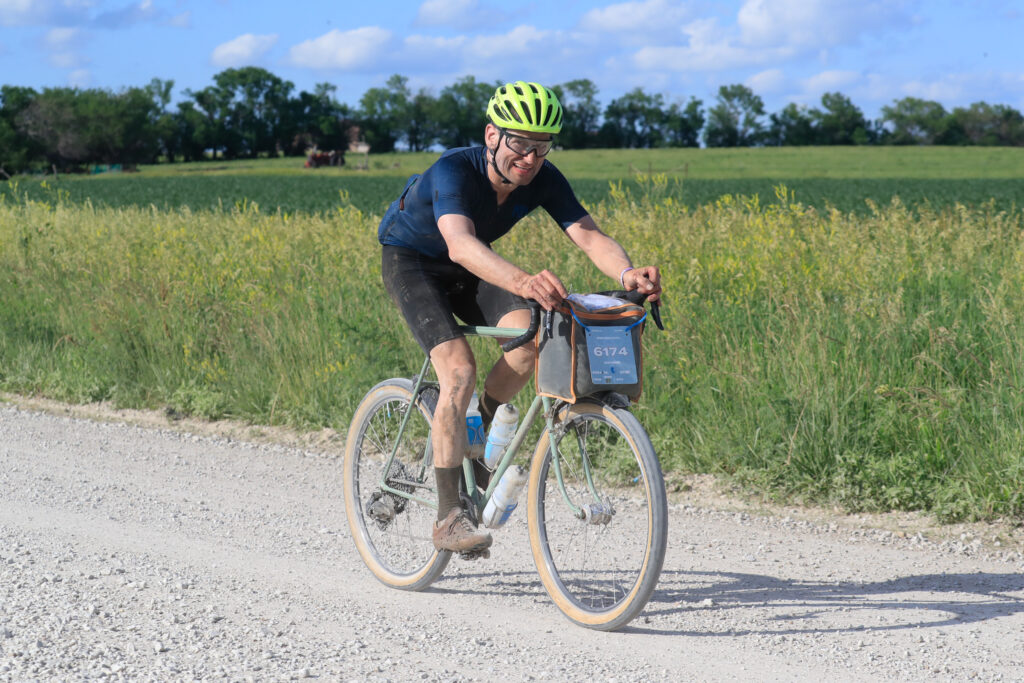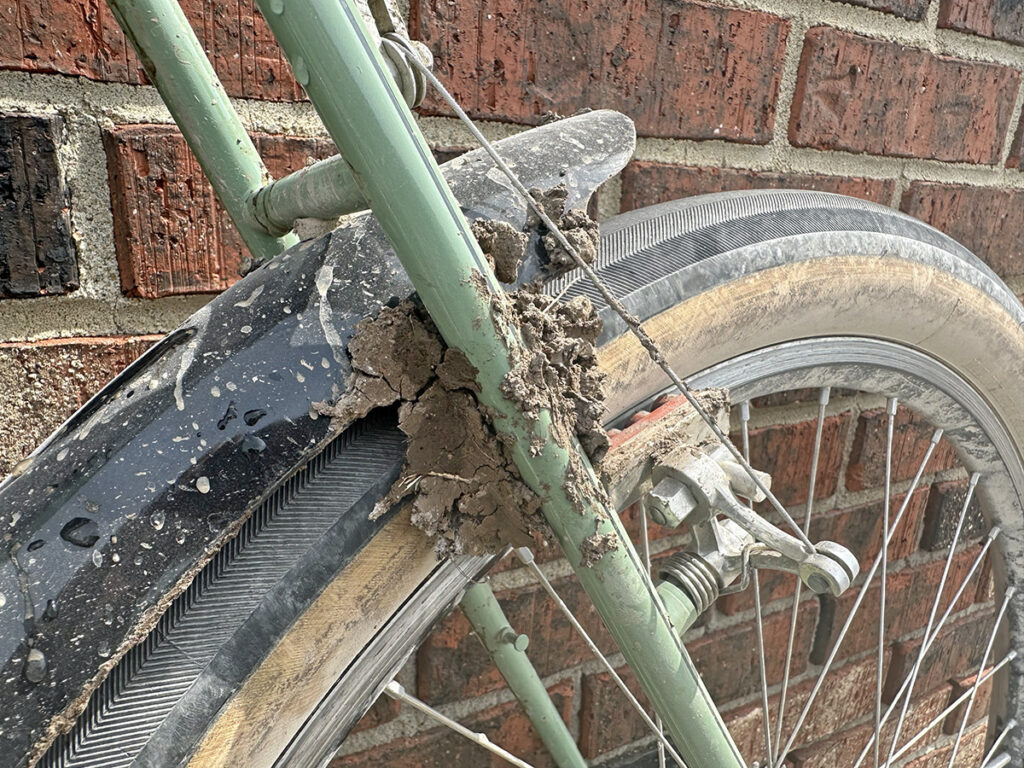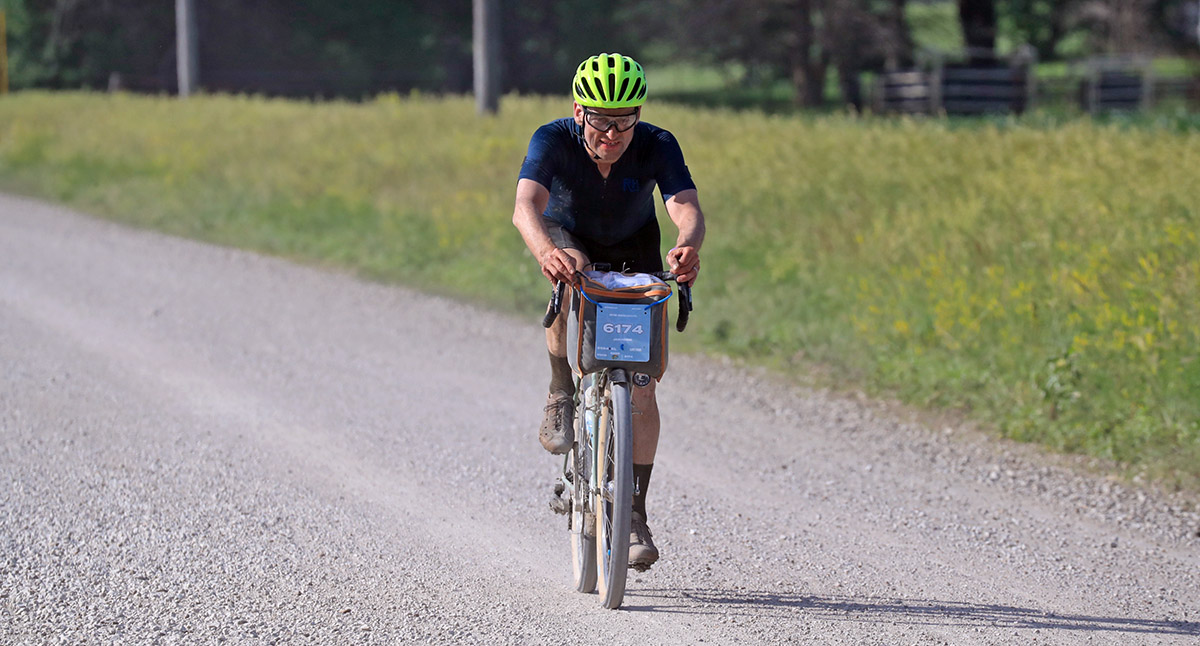Unbound XL: People, Bikes, Landscapes
Why do people ride 355 miles on hilly gravel roads? On the face of it, Unbound XL seems a little crazy. Perhaps something you suffer through so you can tell the tale afterward? Actually, quite to the contrary, it can be hugely enjoyable, because it combines endorphins, beautiful landscapes and great people. Add spending 27 hours with a single-minded focus on doing what I love—riding bikes—and I already want to go back and do it again, before my muscles have even recovered.

Kansas has been a surprise for me. It’s remarkably remote, wild and beautiful. Most photos you see don’t really do Unbound justice, because photographers can’t easily get to the truly amazing places on the course. They are hard enough to reach by bike! There are the endless rolling hills and smooth gravel roads that I imagined when I thought of the Midwest. Those are fun, especially since they are punctuated by real highlights: Rugged climbs on chunky rocks, up steep bluffs, then back down into wooded valleys. The riding was quite technical at times, and the water crossings were fun—especially since we encountered three of them during the (moonless) night. Adventure is a much-overused word, but Unbound XL really is an adventure—without being dangerous or foolhardy.a
We also encountered mud. I suspect every Unbound rider frets about the weather and what it’ll do to roads that are made from clay and silt with some gravel mixed in. It’s Kansas, so of course there are thunderstorms during the days before the race. For this year’s race, most of the mud had dried out, making for exciting riding on slippery surfaces, but as long as you kept the speed up, the mud got flung from the wheels faster than it could accumulate.
That technique worked well for the first 250 miles. Then came a 2-mile section that was unique to the XL course. This gave me my first experience of ‘real’ Unbound mud. A friend once described it as “far beyond anything I could have imagined.” It sticks to anything it touches, locks up your wheels with the first revolution, and stops you in your tracks. It’s incredibly heavy, too, making it hard to carry the bike. Which means scraping the mud off first, and then carrying the bike. Every time a dry spot tempted me to ride, I regretted it, because half the time I didn’t dismount in time for the next mud section. The surface looks dry, but underneath it can be gooey. You roll 10, 20 or even 50 meters and think that it was a great decision to ride this part, when suddenly your tires pick up mud, the wheels stop turning, your bike almost pitches you over the bars, and you have to repeat the scraping routine before shouldering the bike again. My only consolation is that the fastest riders took 40 minutes for those two miles, while it took me 50. So I guess I was doing OK.
It’s really the people that make Unbound special. There are the other riders, all 200 of them. (Unbound XL is becoming a big event.) In theory, we’re competing against each other. But that’s not how it plays out on the (gravel) roads: Instead, we are facing the challenges of this ride together. We ride side-by-side on the uphills, draft on the downhills, check on each other when one is standing by the roadside with a flat tire—which happened a lot—and commiserate while we trudge through the mud.
The support from the community is wonderful, too. Kansas is vast and empty, so when you see a friendly face cheering from a porch in a small town or standing by the roadside with water, it’s especially heart-warming. And the gentleman who handed me a can of Sprite while I passed in full flight on the approach to the finish, will forever have my gratitude. I was out of water as the day heated up quickly, and this made the last 10 miles of the ride much more fun.

A few minutes later, my friend Makoto Ayano jumped out of a car that just had passed me, shouted encouragement, and took the two photos of me. He had already raced the 100-mile course, and now was out again reporting on the longer races.
With that much support, it’s no wonder I’m smiling, even if my bike and body may be covered in mud. My goal was to finish in 27 hours if the course was rideable. I finished in 27:23 hours. Last I checked, that puts me in 41st place. (The results sometimes are adjusted after reviewing the trackers, etc.) It’s impressive how fast the pros can go: The two fastest riders came close to beating 20 hours!

I’m glad to report that I had a trouble-free run. Running Extralight tires and TPU tubes turned out to be right choice for me: zero flats, nor any other tire problems. I loved the feel of the bike with the ultra-supple tires, and the extra speed of that and the TPU tubes certainly helped my results. As usual, I was picking good lines and riding light on the bike, but so was everybody else. I never lost ground on the rough downhills… It’s a different stories for the riders in the pro race where the attacks come in the roughest sections, and riders have to put down max power without regard to the terrain.
In fact, the bike worked great the whole way, with only a minor glitch when the electronic shifting stopped working after the fourth creek crossing. I took off the battery, wiped it dry on my jersey sleeve, and it worked again. At the end of the ride, my bike was (literally!) a few pounds heavier with all the mud still stuck on it—I had only scraped off as much as necessary to get the wheels turning again. Everything worked flawlessly, though: derailleur, brakes, pedals, etc.
While the bike worked well, my GPS had trouble. Just before Mile 200, it suddenly did not show the course any longer. I still could see my position, but not where I should go. First I thought I had gone off-course at the last intersection and started to backtrack. Then I realized that the computer was malfunctioning. Even restarting and re-loading the course didn’t help. What to do in the middle of the night? I realized I had an earlier iteration of the course saved on the Wahoo, and that worked. Fortunately, we had been told which section had changed, so I could navigate that part with my cell phone. (I had saved the course in RideWithGPS for offline use as a precaution.) It seems that these long rides tax the capabilities of GPS units. It’s best to split the course into multiple parts, but that wasn’t an option with all the last-minute changes. It’s all part of the adventure!
In case you worry about my bike after the mudbath—it’s fine. Kansas mud is so sticky because it dissolves so easily in water. That goes the other way, too, making it easy to wash off. There’s a little paint loss on the insides of the fork blades, but I consider that part of the patina that tells the stories of the rides this bike has done.
More Information:
Photo credits: Makoto Ayano, cyclowired.jp (Photos 1, 3); Unbound (Photo 2)



